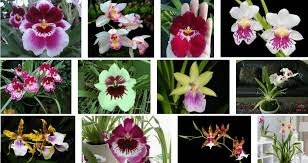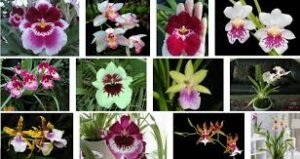# Rare and Special Varieties of Dancing Lady Orchids

Dancing Lady Orchids, scientifically known as *Oncidium*, are celebrated not only for their whimsical appearance but also for the diverse range of species and hybrids within the genus. Among these, there are several rare and unique varieties that stand out due to their stunning flowers, distinct characteristics, and intriguing histories. This comprehensive article will explore the world of rare and special *Oncidium* orchids, discussing their features, care requirements, and the reasons for their desirability among collectors and enthusiasts.
## Understanding the Dancing Lady Orchid
Before diving into the specific varieties, it’s essential to understand what makes *Oncidium* orchids unique:
### 1. Botanical Overview
– **Genus Characteristics**: *Oncidium* orchids belong to the Orchidaceae family and are primarily epiphytic, meaning they grow on other plants. They are native to Central and South America and are recognized for their diverse flower forms and colors.
– **Flower Structure**: The flowers of Dancing Lady Orchids often feature a unique morphology, with petals that can resemble a dancer’s arms and skirt. This distinctive shape is a key aspect of their charm and allure.
– **Color Variations**: *Oncidium* orchids come in various colors, including yellow, orange, white, and maroon, with many varieties exhibiting intricate patterns and markings that enhance their beauty.
### 2. Care Requirements
Caring for *Oncidium* orchids requires understanding their specific needs:
– **Light**: They thrive in bright, indirect light. Direct sunlight can scorch the leaves, while insufficient light can hinder flowering.
– **Watering**: Regular watering is essential, allowing the growing medium to dry slightly between waterings. Overwatering can lead to root rot, while underwatering can cause the plant to stress.
– **Humidity**: These orchids prefer high humidity levels, ideally between 40-70%. Using a humidity tray or misting can help maintain the necessary moisture in the air.
## Rare Varieties of Dancing Lady Orchids
Here are some of the most sought-after rare and special varieties of *Oncidium* orchids, along with their unique characteristics and care tips:
### 1. **Oncidium Sharry Baby**
#### Characteristics:
– **Flower Appearance**: This variety is famous for its striking dark maroon flowers with a delightful fragrance reminiscent of chocolate or vanilla. The flowers are typically small and grow in clusters.
– **Growth Habit**: *Oncidium Sharry Baby* is a compact grower, making it suitable for pot culture. It produces multiple pseudobulbs and can flower several times a year.
#### Care Tips:
– **Light**: Provide bright, indirect light to encourage blooming.
– **Water**: Water regularly, allowing the medium to dry slightly between waterings.
– **Humidity**: Ensure high humidity, especially during the growing season.
### 2. **Oncidium sphacelatum**
#### Characteristics:
– **Flower Appearance**: This species produces long, cascading sprays of small, bright yellow flowers with maroon spots. The effect is reminiscent of a waterfall of blooms.
– **Growth Habit**: This species can grow quite large and prefers to be mounted on tree bark or in baskets rather than in pots, allowing the roots to breathe.
#### Care Tips:
– **Light**: Thrives in bright, filtered light.
– **Water**: Requires regular watering but must be well-drained to prevent rot.
– **Humidity**: Enjoys high humidity levels; consider a humidifier or misting.
### 3. **Oncidium Papilio**
#### Characteristics:
– **Flower Appearance**: Known as the Butterfly Orchid, this species features unique flowers that resemble butterflies in flight. The flowers are typically yellow with brown markings, giving them a distinct appearance.
– **Growth Habit**: *Oncidium papilio* can grow up to 2 feet tall and produces many blooms on a single spike.
#### Care Tips:
– **Light**: Prefers bright, indirect light.
– **Water**: Keep the growing medium evenly moist but well-drained.
– **Humidity**: Requires moderate to high humidity.
### 4. **Oncidium varicosum**
#### Characteristics:
– **Flower Appearance**: This species features striking yellow flowers with dark red or purple markings. The blooms are fragrant and typically grow in clusters.
– **Growth Habit**: It has a compact growth habit, making it suitable for home cultivation.
#### Care Tips:
– **Light**: Requires bright light for optimal growth.
– **Water**: Water when the top inch of the medium feels dry.
– **Humidity**: Prefers a humid environment.
### 5. **Oncidium ornithorhynchum**
#### Characteristics:
– **Flower Appearance**: Commonly known as the Bird Orchid, this species has uniquely shaped flowers that resemble the beak of a bird. The flowers are generally pale yellow with maroon spots.
– **Growth Habit**: It grows well as an epiphyte or in a pot and produces multiple flowering spikes throughout the year.
#### Care Tips:
– **Light**: Enjoys bright, indirect sunlight.
– **Water**: Keep the potting medium moist but avoid waterlogging.
– **Humidity**: Thrives in humid conditions.
### 6. **Oncidium “Twinkle”**
#### Characteristics:
– **Flower Appearance**: This hybrid produces small, star-shaped flowers that are sweetly scented and come in various colors, including white, yellow, and pink. The plant is popular for its ability to bloom frequently.
– **Growth Habit**: *Twinkle* orchids are compact and grow well in pots or hanging baskets.
#### Care Tips:
– **Light**: Bright, indirect light is ideal for this hybrid.
– **Water**: Allow the medium to dry out slightly between waterings.
– **Humidity**: Prefers moderate humidity levels.
## Special Hybrid Varieties
In addition to rare species, several special hybrids of *Oncidium* orchids have gained popularity among collectors due to their unique features and remarkable blooms:
### 1. **Oncidium Golden Shower**
#### Characteristics:
– **Flower Appearance**: This hybrid produces stunning, cascading yellow flowers that resemble a shower of gold. It’s known for its prolific blooming.
– **Growth Habit**: It can grow quite large and is suitable for hanging baskets.
#### Care Tips:
– **Light**: Requires bright light for optimal flowering.
– **Water**: Keep the medium moist but well-drained.
– **Humidity**: High humidity levels are preferred.
### 2. **Oncidium Sweet Sugar**
#### Characteristics:
– **Flower Appearance**: This hybrid features clusters of small, fragrant flowers that come in shades of yellow, white, and pink, often with striking markings.
– **Growth Habit**: It has a compact growth habit, making it suitable for home environments.
#### Care Tips:
– **Light**: Thrives in bright, indirect light.
– **Water**: Water regularly but allow the medium to dry out slightly.
– **Humidity**: Prefers a humid environment.
## The Appeal of Rare and Special *Oncidium* Varieties
### 1. Collectors’ Treasures
Rare and special varieties of Dancing Lady Orchids are highly sought after by collectors for several reasons:
– **Unique Aesthetics**: The unusual shapes, colors, and fragrances of these orchids make them stand out in any collection.
– **Cultural Significance**: Many of these orchids carry cultural stories or significance, enhancing their allure as collectibles.
– **Investment Value**: As more growers seek unique specimens, the market for rare orchids can appreciate in value over time.
### 2. Environmental and Botanical Importance
Rare *Oncidium* orchids contribute to biodiversity and ecological balance:
– **Habitat Preservation**: By cultivating and promoting these rare species, enthusiasts help protect their natural habitats and raise awareness about conservation efforts.
– **Research and Education**: Rare orchids often become focal points for research and education, highlighting the importance of preserving plant diversity.
## Tips for Growing Rare *Oncidium* Orchids
### 1. Understanding Your Orchid
– **Research**: Before acquiring a rare *Oncidium* orchid, research its specific needs, including light, water, and temperature requirements.
– **Source**: Purchase from reputable growers or nurseries to ensure you’re getting healthy, well-cared-for plants.
### 2. Proper Care Techniques
– **Potting Medium**: Use a well-draining potting medium, typically a mix of bark, sphagnum moss, and perlite to provide the right balance of moisture retention and aeration.
– **Watering Routine**: Develop a consistent watering routine that accommodates the specific needs of your orchid. Remember that *Oncidium* orchids prefer to dry out slightly between waterings.
– **Fertilization**: Use a balanced orchid fertilizer every 4-6 weeks during the growing season to promote healthy growth and blooming.
### 3. Monitoring Health
– **Pest Control**: Regularly inspect your orchids for pests such as aphids, spider mites, and mealybugs. Prompt action can prevent infestations.
– **Fungal Issues**: Watch for signs of fungal infections, such as black spots on leaves. Proper airflow and watering practices can help mitigate these issues.
## Conclusion: The Enchantment of Rare Dancing Lady Orchids
The world of rare and special *Oncidium* orchids offers a captivating blend of beauty, diversity, and cultural significance. These unique varieties, from the delightful *Oncidium Sharry Baby* to the stunning *Oncidium sphacelatum*, not only capture the imagination of orchid enthusiasts but also serve as symbols of ecological diversity and preservation.
Whether you’re a seasoned collector or a newcomer to the world of orchids, understanding and appreciating the nuances of these rare beauties can enhance your gardening experience. As
you cultivate these exquisite plants, you contribute to the legacy of orchids, fostering a deeper connection to the natural world.
Explore the enchanting realm of Dancing Lady Orchids, and you may find not just a flower, but a passion that dances along with their graceful blooms.

















